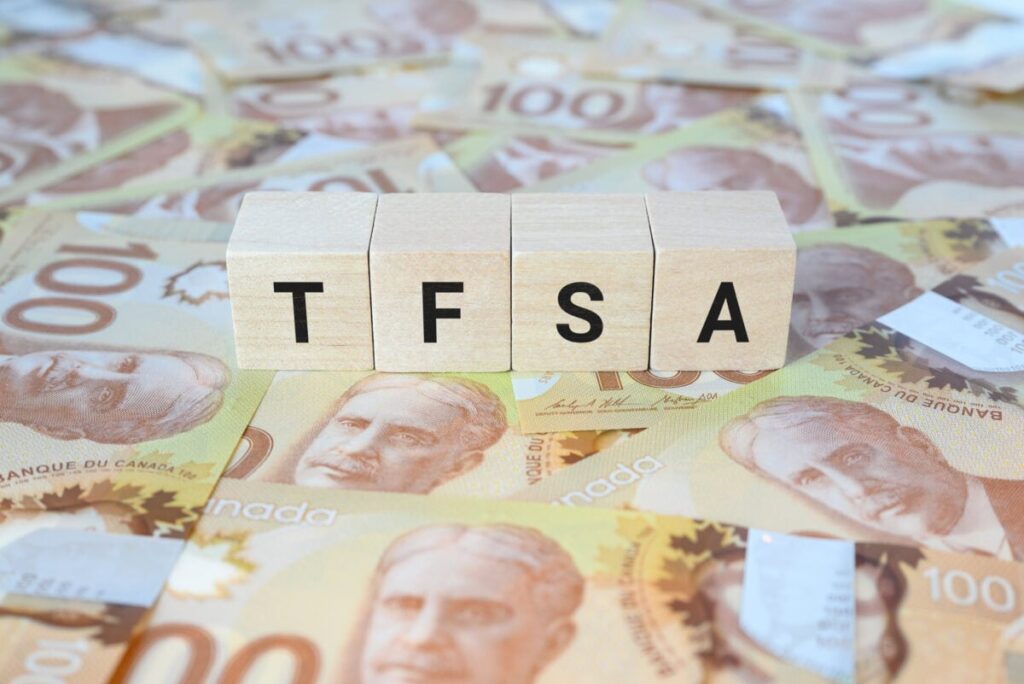With the Tax-Free Savings Account (TFSA) contribution limit for 2025 set at $7,000, Canadians have a fantastic opportunity to invest for long-term growth without paying taxes on the gains. But with a range of eligible investments — from cash and Guaranteed Investment Certificates (GICs) to stocks, mutual funds, and exchange-traded funds (ETFs) — where should you place your contribution for the best results? The answer lies in strategically choosing investments that offer strong potential for long-term returns while fitting your risk profile.
1. ETFs: A simple, diversified approach for long-term growth
One of the easiest and most efficient ways to grow your TFSA is by investing in ETFs, which offer instant diversification. A great example of a low-cost, diversified ETF is iShares Core Equity ETF Portfolio (TSX:XEQT). This fund provides 100% equity exposure across global markets, with approximately 45% in U.S. stocks, 25% in Europe, Asia, and Australia, and another 25% in Canadian stocks. The remaining 5% is invested in emerging markets.
In the last five years, XEQT has posted an impressive annual return of about 11.6%, making it an excellent choice for long-term investors, especially on any pullbacks. The ETF also has a low management expense ratio (MER) of 0.20%, ensuring more of your money stays invested. Plus, with a recent quarterly cash distribution yielding 3.16%, you get a nice stream of passive income alongside growth.
2. Ride the AI wave with specialized ETFs
Artificial intelligence (AI) is one of the most exciting sectors for long-term growth, though it comes with higher volatility. If you’re not keen on picking individual AI stocks but still want to tap into this rapidly growing area, consider an AI-focused ETF like CI Global Artificial Intelligence ETF (TSX:CIAI). This actively managed ETF is helmed by a team of experts and holds high-quality companies in the AI space, including top names like NVIDIA, Broadcom, and Microsoft.
Launched in May 2024, the ETF has already returned around 33% since its inception, highlighting the immense growth potential of AI-focused investments. With a MER of 0.42%, it’s a more efficient way to gain exposure to the AI revolution without having to worry about picking individual stocks. However, keep in mind that the volatility of the tech sector can lead to more significant price fluctuations, so this is better suited for investors with a higher risk tolerance.
3. Solid dividend stocks for reliable returns
If you prefer investments that provide both growth and income, dividend stocks might be a good fit. Many established companies pay a steady stream of dividends to shareholders, which can be reinvested for compounded growth. A strong candidate for dividend income is Bank of Nova Scotia (TSX:BNS), which offers a solid yield of around 5.9%. While its stock has lagged behind some of its peers, it remains a reliable dividend payer with a sustainable payout ratio of 60% of adjusted earnings.
Analysts believe Bank of Nova Scotia shares are undervalued by approximately 11%, which presents an opportunity for both capital appreciation and consistent dividend income. With the potential to deliver total returns of about 10% per year over the next three years, this stock is a solid choice for investors seeking a blend of income and growth.
The Foolish investor takeaway
While there are many options for your TFSA contribution, ETFs, AI-focused funds, and dividend stocks are good considerations for long-term gains. Before making a decision, it’s essential to assess your risk tolerance and investment horizon. Whether you opt for diversified ETFs, take advantage of the explosive growth in AI, or focus on steady dividend income, your $7,000 TFSA contribution can be a powerful tool for building wealth over time.

